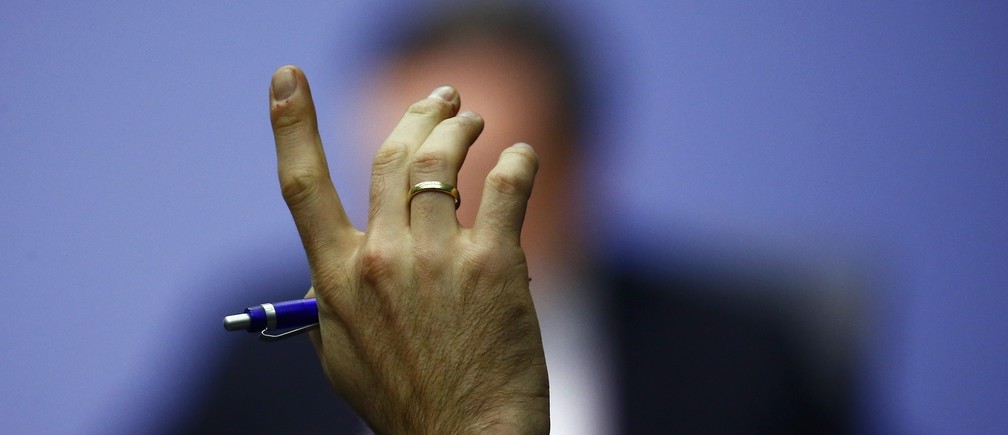Came across a rather interesting article on play in Atlantic, check it here . Personally, found it reather difficult to disagree with the author. Enjoy
The division between work and play is a myth. If America is going to teach its youth to innovate, we need to unite the two.

Lego Minifigures
Nearly a decade ago, John Howkins wrote a book called The Creative Economy: How People Make Money From Ideas. Similarly, Richard Florida identified the “creative class” and suggested that innovation would come from a “super creative core.” But somehow, even with this knowledge, we have fallen further behind.
According to Newsweek, the United States is in a creativity crisis. TIME reports that today’s students are less tolerant of ambiguity and have an aversion to complexity. And The Futurist suggests that the biggest challenge facing our children is their inability to think realistically, creatively, and optimistically about the future. Wake up, America. The real threat to the United States’s continued superpower status isn’t from an arsenal of weapons—it’s from the lack of an arsenal of the mind.
Innovation companies today don’t ask and don’t care about basic skills, grades, or SAT scores—instead, they want to know if you can brainstorm all the possible uses of bubble wrap.
Eighty-five percent of today’s companies searching for creative talent can’t find it. In a recent IBM survey, 1,500 CEOs identified creativity as the number one leadership competency of the future. And the United Nations just released the Creative Economy Report of 2010, suggesting that creative countries are more economically resilient. As Tim Draper voiced in the documentary 2 Million Minutes, “America is the one country that doesn’t seem to recognize that it is in competition for the great minds and capital of the world.”
During my keynote speech at MIT’s Sandbox Summit last year, I suggested that “Play is the greatest natural resource in a creative economy.” In the future, economies won’t be driven by financial capital or even the more narrowly focused scientific capital, but by play capital as well. I predict the countries that take play seriously, not only nurturing it in education and the workforce but also formalizing it as a national effort, will quickly rise in the world order. This is not Twister in the boardroom. Rather, it’s what Jeremy Levy, a physics professor at the University of Pittsburgh, would call “a highly advanced form of play.”
Literacy is like Legos. Basic proficiency in math, reading and writing are, and will remain, the building blocks of education. But we need to advance our ability to use these literacies. While the United States currently struggles to achieve 30 percent reading proficiency by 4th grade, other economic powers like the E.U. and China have begun their quest for advanced forms of play. For example, the Chinese government recently launched a five-year initiative on fostering creativity and innovation in China, and they are tapping design firms like frog design to play a part.
These advanced forms of play can be more aptly described as superpowers of play. Superpowers, by my definition, are the physical and mental skills that we develop to adapt and thrive in a complex world, while exploring the creative opportunities made possible by global progress. While few will refute that we need a shift in education, the biggest debate may be over what these superpowers—and their roles in this change—should be.
The answer might come in the form of the classic dinner party question. “Living or dead: whom would you have at your dinner party?” If we invited the greatest play pioneers of our time, such as Stuart Brown, Howard Chudacoff, Will Wright, Edward De Bono, Katie Salen, Jane McGonigal, Beau Lotto, Sir Ken Robinson, Henry Jenkins, and Daniel Pink, we would have a fairly solid answer. Superpowers aren’t literacies. They aren’t narrowly defined subjects. And they aren’t a technology platform. They are naturally occurring abilities we purposefully foster that amplify our human potential. In a Conceptual Age, the superpowers of play will define the new GDP.
Someday, rather than measuring memorization as an indicator of progress, we will measure our children’s ability to manipulate (deconstruct and hack), morph (think flexibly and be tolerant of change), and move (think “with their hands” and play productively). Standardized aptitude tests will be replaced by our abilities to see (observe and imagine), sense (have empathy and intrinsic motivation), and stretch (think abstractly and systemically). We will advance our abilities to collaborate and create.
To reap the rewards of these abilities, we must set aside the myth that play and work are two separate things. Play should be our greatest work, as it is the biggest driver of innovation. Innovation companies today don’t ask and don’t care about basic skills, grades, or SAT scores—instead, they want to know if you can brainstorm all the possible uses of bubble wrap. This falls under what I would call a MacGyver Manifesto. We must pair the practical application of our learned knowledge with the inventive use of these abilities to solve challenging problems.
Which is why I will teach my daughter to add with colors as well as numbers. While other children may learn to sew, she will also be taking the machine apart. She will not only be introduced to the traditional periodic table, but the other valid versions we are never taught in school—and then make one of her own. I will tell her there are no SATs for the presidency, and that you can’t solve oil spills with multiple-choice answers. If everyone expects her to be a superhero, then she will have the superpowers to be one. In the end, it comes down to a simple but foregone conclusion: The future favors the flexible.






 Become a LEGO Serious Play facilitator - check one of the upcoming training events!
Become a LEGO Serious Play facilitator - check one of the upcoming training events!
Hi, could you check the link, seems that it does not work properly and I am interested to read the article.
Cheers, Hugo
hi Hugo
Strange seems to work fine for me, anyhow, here is the full URL: http://www.theatlantic.com/life/archive/2011/05/play-power-how-to-turn-around-our-creativity-crisis/238167/
Hi All,
please have a look at the 2008 Tim Brown Talk at TED.com…. creativity and play
http://www.ted.com/talks/lang/eng/tim_brown_on_creativity_and_play.html
cheers, Hugo